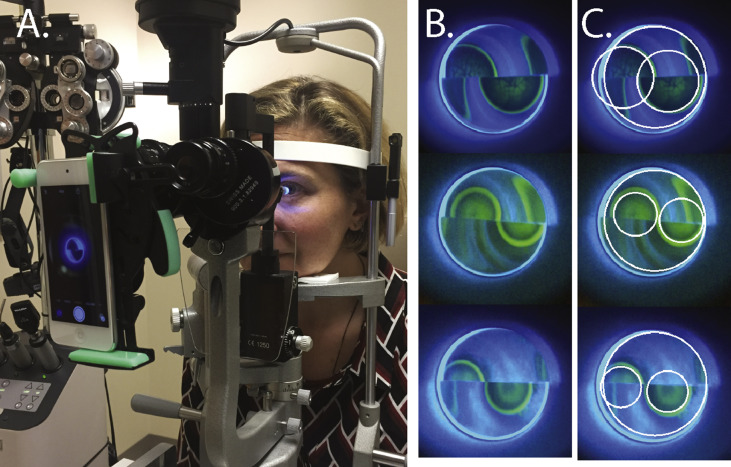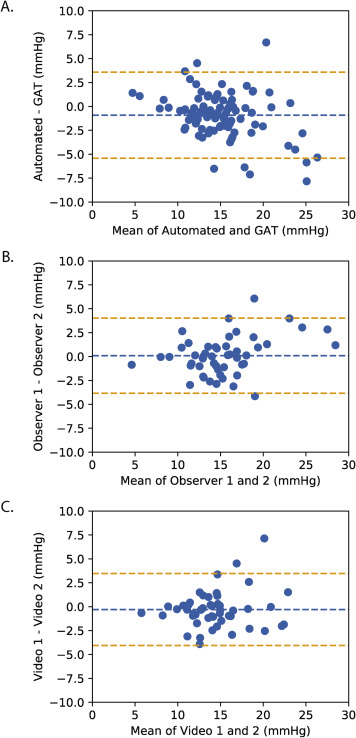This study describes a novel method for automating Goldman Applanation Tonometry (GAT) measurements using a deep learning approach. GAT is the gold standard method for measuring intraocular pressure, which is an essential metric in the management of glaucoma.
To obtain accurate intraocular pressure measurements using traditional GAT, the user must use a dial to adjust the device to align two visible circular "mires", in order to determine the correct amount of force needed to create a fixed area of applanation on the surface of the eye, which is then used to calculate the intraocular pressure. This somewhat subjective alignment procedure can produce different results between users, and studies have found other unintended biases such as a preference for even-numbered readings on the dial. The goal of this study was to provide a method for obtaining more objective and reproducible GAT readings, by training a deep learning based algorithm to accurately recognize and measure the mires produced from a fixed application of force, and then use the measurements to calculate the intraocular pressure.

A video camera attached to a slit lamp microscope was used to capture the GAT procedure. The deep learning model used automated image segmentation to successfully identify and measure the mires in frames from the videos, obtained under a range of imaging conditions. The IOP measurements obtained using the automated GAT were comparable to standard GAT measurements and also compared favorably to other tonometers in clinical use.

An interesting additional observation was made during this study. When IOP measurements from sequential frames of the automated GAT videos were plotted, ocular pulsations could be seen. The relationship between ocular pulsation measurements and glaucoma is not well understood, but there is some evidence that this measurement could be clinically significant. The automated GAT system would be an easy method for capturing ocular pulsations, requiring only the addition of a camera to standard ophthalmologic equipment.
Automated GAT reduces some of the biases introduced by standard GAT and may be a way to decrease research costs by allowing single observer GAT measurements.
Spaide T, Wu Y, Yanagihara RT, Fang S, Ghabra O, Yi JS, Chen PP, Moses F, Lee AY, Wen JC. Using Deep Learning to Automate Goldmann Applanation Tonometry Readings. Ophthalmology. 2020 April 25. pii: S0161-6420(20)30412-7. doi: 10.1016/j.ophtha.2020.04.033. [Epub ahead of print] PMID: 32344074

